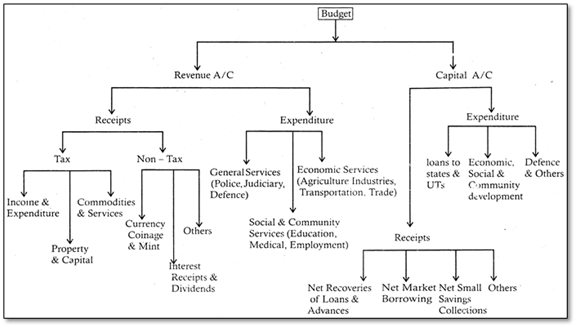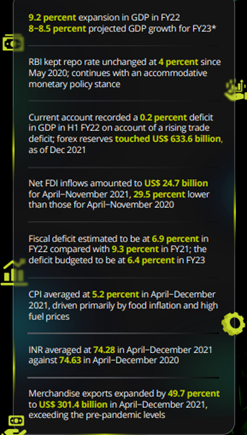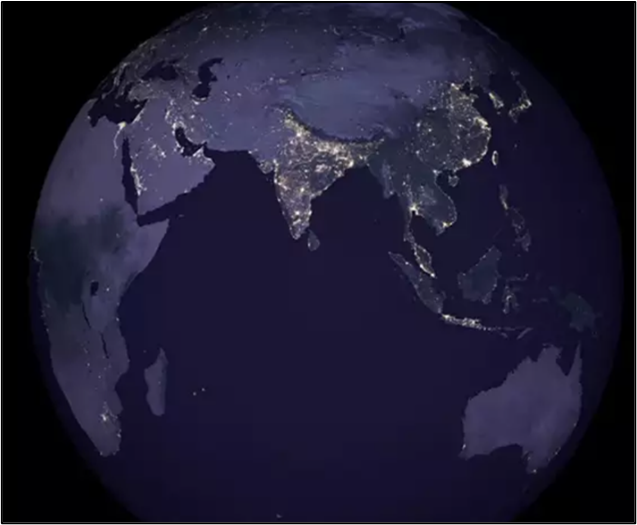Friday, 4th February 2022
National Supercomputing Mission
In News
Indian Institute of Science (IISc) has commissioned and installed Param Pravega, the largest supercomputer in an Indian academic institution under the National Supercomputing Mission (NSM), which has a supercomputing capacity of 3.3 petaflops.
About NSM
- Announced in 2015, the Mission envisages empowering our national academic and R&D institutions spread over the country by installing a vast supercomputing grid comprising of more than 70 high-performance computing facilities, in 7 years.
- These supercomputers will also be networked on the National Supercomputing grid over the National Knowledge Network (NKN).
- Under NKN academic institutions and R&D labs will be connected over a high-speed network.
- Academic and R&D institutions as well as key user departments/ministries would participate by using these facilities and develop applications of national relevance.
- The Mission is being jointly steered by the Department of Science and Technology (DST) and the Ministry of Electronics and Information Technology (MeitY) and implemented by the Centre for Development of Advanced Computing (C-DAC), and the Indian Institute of Science (IISc).
- The mission has supported the deployment of 10 supercomputer systems so far at various academic and government institutions, with a cumulative computing power of 17 petaflops.
- Apart from Param Pravega, three supercomputers a – PARAM Siddhi-AI, Pratyush, and Mihir – are among the top 500 fastest supercomputers in the World.
- Majority of the components used to build Param Pravega have been manufactured and assembled within the country, along with an indigenous software stack developed by C-DAC, in line with the Make in India initiative.

About Supercomputers
- Supercomputers are the fastest computers in the world made up of interconnects, I/O systems, memory and processor cores.
- Unlike traditional computers, supercomputers use more than one central processing unit (CPU).
- Because of modern supercomputers' power consumption, they require cooling systems and suitable facilities to house it the entire setup.
- Supercomputing is measured in floating-point operations per second (FLOPS). Petaflops are a measure of a computer's processing speed equal to a thousand trillion flops. One petaflop computer system can perform one quadrillion flop i.e., supercomputers have one million times more processing power than the fastest laptop.
- According to the TOP500 list, the world's fastest supercomputer is Japan's Fugaku at a speed of 442 petaflops as of June 2021.
- India’s top three supercomputers, apart from Param Pravega, are PARAM Siddhi – AI, Pratyush and Mihir. PARAM 8000 was India’s first Supercomputer. PARAM Siddhi-AI ranks in the top 100 list, and the rest of the two are in the top 200 list.
- Supercomputers are being used increasingly in various application areas including Artificial Intelligence, Space Technology and modern medicine.
- SahasraT supercomputer that was installed in IISc in 2015 was used in modelling viral entry and binding, studying interactions of proteins in bacterial and viral diseases including Covid 19, and designing new molecules with antibacterial and antiviral properties.

Sources:
Assam-Arunachal Pradesh border dispute
In News
The ongoing construction of Likabali-Durpai road has created dispute along the Assam-Arunachal Pradesh border.
About the News
- There has been persistent tension along the Assam-Arunachal Pradesh border since the colonial times. However, the current flashpoint is the ongoing construction of the Likabali-Durpai road.
- The road is being built under the Pradhan Mantri Gram Sadak Yojana (PMGSY), in Arunachal Pradesh’s Lower Siang district.
- The road aims to connect at least 24 villages between Arunachal Pradesh’s Durpai and Likabali towns.
- Assam claims that some parts of the road, under construction falls under its Dhemaji district.
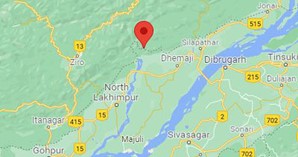
The prolonged Dispute/ Bone of Contention:
- Origin: The dispute between the states dates back to colonial times, when the British in 1873 announced the “inner line” regulation, demarcating an imaginary boundary between plains and the frontier hills (present day Arunachal Pradesh), which were later designated as the North-East Frontier Tracts in 1915.
- Arunachal Pradesh, which was earlier a part of Assam, currently shares a boundary of about 800 km with the state.
- Statehood: After Independence, the Assam government assumed administrative jurisdiction over the North East Frontier Tracts, which later became the North East Frontier Agency (NEFA) in 1954, and finally, the Union Territory (UT) of Arunachal Pradesh in 1972 which gained statehood in 1987.
- However, before Arunachal Pradesh was carved out of Assam, as per the Bordoloi Committee recommendations, around 3,648 sq km of the “plain” area of foothills was transferred from Arunachal Pradesh (then NEFA) to Assam.
- Arbitrary Recommendation: The plain area (transferred to Assam) remains the bone of contention between the two states as Arunachal Pradesh refuses to accept the basis of demarcation.
- Delineation of the boundary: Between 1971 and 1974, there were multiple efforts to demarcate the boundary, but the efforts did not yield enough fruit. Hence, in 1979, a high-powered tripartite committee was constituted to delineate the boundary on the basis of Survey of India maps.
- This too was objected by Assam on the basis of “encroachment” following which Assam that filed a case in the Supreme Court in 1989.
- To resolve the dispute between the two states, the apex court-appointed a local boundary commission in 2006 which submitted its report in 2014 with several recommendations aimed at both states arriving at a consensus through discussions.
- With all these yielding no results, the current construction of Likabali-Durpai PMGSY road project has led to civilian unrest in the border yet again.
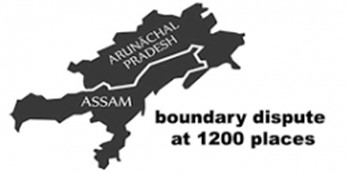
Source:
India Press Freedom Report-2022
In News
The “India Press Freedom Report 2021” has been released by the Rights and Risks Analysis Group (RRAG).
About the News
- The report stated that at least six journalists were killed and 121 journalists/media houses were targeted in India.
- The highest number of journalists/media organisations targeted was in Jammu and Kashmir (25), followed by Uttar Pradesh (23) and Madhya Pradesh (16)
- At least eight female journalists faced arrest, summon, first information reports (FIRs) and sexual harassment.
What were the major crackdowns on Press in India?
- Laws as tool to suppress: Various sections of IPC used against the journalists and media houses during 2021 are Section 124A (sedition), Section 153 (wantonly giving provocation with intent to cause riot), Section 153A (promoting enmity between religious groups), Section 153B (imputations, assertions prejudicial to national integration) defamation, as well under the Unlawful Atrocities (Prevention) Act (UAPA), the Information and Technology Act including Section 66A and Section 66F, the Epidemic Diseases Act, 1897 etc.
- Arrest and Detention: Journalists were arrested/detained for reasons ranging from publishing a video news report critical of a chief minister; publishing misleading and defamatory information; attempting to bring hatred/ contempt/ disaffection against government to spreading communal disharmony for reporting on vandalism at mosque and conspiracy to commit crime etc.,
- Registration of FIRs: During 2021, FIRs were registered against 44 journalists and two media organisations. Out of the 44 journalists, FIRs were filed against 21 journalists under Section 153 of the IPC for promoting enmity.
- Summons/show cause notices: In 2021, at least six journalists were summoned by police of Jammu and Kashmir and Tripura for their journalistic works.
- Physical attacks and intimidation by security forces and other public officials: In the year 2021, at least 24 journalists were allegedly physically attacked, threatened, harassed and obstructed from doing their professional works by public officials including police across the country.
- Censorship and raids on offices and houses of media organizations and journalists: Enforcement Directorate (ED) and Income Tax (IT) raided offices of media houses/newspapers and houses of journalists who were critical of policies and functioning of the Government.
- Attack by non-State actors: There has been recent rise in various forms of online threats/harassment of journalists. For example, a female journalist, who covered the 2020 riots in northeast Delhi, was among the women who were targeted by an online application called “Sulli Deals”, where photos of Muslim women were uploaded online, implying that these women were “up for sale”. ‘Sulli’ or ‘Sulla’ is a derogatory word used to refer to Muslims.
What are the major causes of concern?
- Fear of continuing deterioration of civic space in the country: The Information Technology (Intermediary Guidelines and Digital Media Ethics Code) Rules 2021 empower the Union Government to block, delete, or modify published news anywhere in the country without any judicial oversight and require all publishers to establish a grievance redressal mechanism.
- Issue of Fake news: Misuse of social media platforms by circulating fake and baseless news items for their own interests and directed such unauthorised/ unregistered journalists to complete their registration or obtain approval before they can be allowed to perform their professional duties.
- Lack of consultative mechanism: Editor Guild of India (EGI) on various occasions have expressed deep concern stating that the Government does not consult stakeholders before notifying these far-reaching rules
Sources:
World Cancer Day
On February 4, 2000 World Cancer Day was started at the World Summit Against Cancer for the New Millennium in Paris. Cancer is one of the world’s leading causes of death, and its burden is growing. In 2021, the world crossed a sobering new threshold – an estimated 20 million people were diagnosed with cancer, and 10 million died. The theme for this year’s World Cancer Day is “closing the care gap”. Further, an ICMR report suggests that there will be a 12% rise in the number of cases by 2025. World Cancer Day is an initiative of the Union for International Cancer Control (UICC), the largest and oldest international cancer organisation dedicated to taking the lead in convening, capacity building and advocacy initiatives that unite the cancer community to reduce the global cancer burden, promote greater equity, and integrate cancer control into the world health and development agenda.

Source:
Divestment Policy
In News
In the Economic Survey 2021-22, the Government of India has hailed the privatisation of Air India as an important milestone in terms of not only generating disinvestment proceeds but also for boosting the Centre’s privatisation drive.
Economic Survey’s observations on Divestment
- The privatisation of Air India has been particularly important, not only in terms of garnering disinvestment proceeds but also for boosting the privatisation drive.
- Air India handover, coupled with a boost to digital infrastructure and structural reforms in telecommunications, will have a positive impact on the pace of recovery in aftermath of the pandemic.
- The New Public Sector Enterprise Policy and Asset Monetisation Strategy reaffirm the government’s commitment towards privatisation and strategic disinvestment of PSEs.
What is Divestment?
- Disinvestment refers to the action of an organization or the government in selling or liquidating an asset or subsidiary.
- Disinvestment involves sale of only part of equity holdings held by the government to private investors. Disinvestment process leads only to dilution of ownership and not transfer of full ownership. Disinvestment is called as ‘Partial Privatization’.
- Under Privatization, government may sell a whole enterprise, or a majority stake in it, to private investors.
Objectives of Divestment
- Reducing the financial burden: Disinvestment is aimed at reducing the financial burden on the government due to inefficient PSUs and to improve public finances.
- Increased Competition in the Market: By removing government as a player from strategic sectors, it introduces competition in the market.
- Improving market discipline: With many companies vying to succeed in the market, stability improves and market discipline improves.
- Depoliticising non-essential services: With less government control non-essential services will remain neutral politically.
- Improving public finances: Disinvestment is also done at times to raise money for meeting specific needs, such as to bridge the revenue shortfall from other regular sources.
- Funding growth and development programmes: It can be helpful in the long-term growth of the country; it allows the government and even the company to reduce debt.
What is the disinvestment policy followed in India?
- A separate team under the Ministry of Finance handles all the disinvestment-related tasks called the Department of Disinvestment. The department is now made a separate entity called the Department of Investment and Public Asset Management (DIPAM).
- The targets of the department are set in every Union Budget and may vary every year.
- Divestment in India is a by-product of the economic reforms initiated in 1991 whereby the role of the government versus the market was sought to be redefined, market discipline was sought to be injected in PSUs’ decision-making, loss-making public enterprises were sought to be revived and additional resource needs for containing the fiscal deficit and capital expenditure generated.
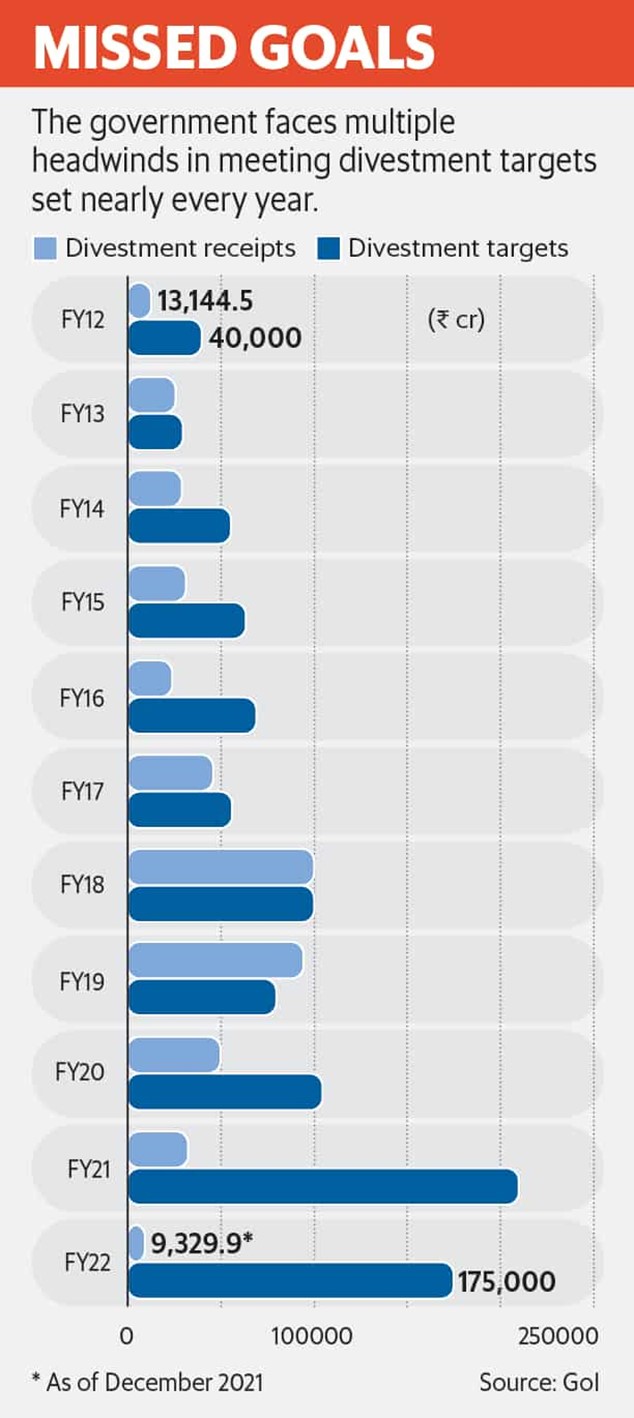
Methods of Disinvestment
- Exchange-Traded Funds (ETF): An ETF is a basket of stocks. The government has two primary ETFs: (i) CPSE-ETF and (ii) Bharat 22 ETF.
- Offer-For-Sale (OFS): OFS involves the sale of government’s shareholding in listed CPSEs in the stock market.
- Strategic Disinvestment: Strategic disinvestment involves sale of a substantial portion of the government’s shareholding in a CPSE (up to 50% or more) along with transfer of management control.
- Buybacks: Buyback is a process where a company purchases its shares from its existing shareholders.
- Initial Public Offer (IPO): IPO involves offer of shares by an unlisted CPSE or the Government out of its shareholding or a combination of both to the public for subscription for the first time.
- Further Public Offering (FPO): FPO involves offer of shares by a listed CPSE or the Government out of its shareholding or a combination of both to the public for subscription.
- Institutional Placement Program (IPP): only Institutions can participate in the offering.
- CPSE to CPSE sale: Under this method, government transfers its shares in one CPSE to another CPSE. There have been eight such transactions in the last six years.
Trends in Divestment in India


Way Forward: Reforms needed for Effective Divestment
The Union Budget has pegged the divestment targets at a conservative Rs 65,000 crore, for the year 2022-23. The divestment target for the current financial year has been slashed by over 55 per cent to Rs 78,000 crore as its big ticket privatisation proposals have seen a delay.
- The primary requirement for the divestment policy is to define the priority sectors for the government based on its strategic interests. Recently, government came out with a new strategic disinvestment policy (SDP). All CPSUs were classified into strategic and non-strategic sectors.
- As per the current divestment policy, “government has to retain majority shareholding, i.e., at least 51% and management control of the PSUs". The policy thereby limits the scope to create divestments that would allow easy exit for the government from non-strategic sectors. Eventually, the objective of divestment should be to limit the government ownership to strategic sectors.
- It is important to realize that ownership is not a substitute for regulation. Therefore, instead of creating PSUs in non-priority sectors, the government should look into strengthening the regulatory framework that ensures efficient market conditions.
- It is time that divestment is not seen as an option to cover for short-term fiscal gains; instead, it should be part of a strategic plan to improve the production of goods and services in India.
- It is important to carefully choose where to disinvest and where not to. To be more specific it wouldn’t make sense to disinvest in a company that is debt-free and churning profit.
- The importance of divesting the right asset at the right time should be understood. Decisions ought to be taken quickly lest the value of the unit—like plant and equipment—depreciates to a large extent. Timely divestment can increase the sale value and stakeholder returns.
Question: The divestment targets of government go unmet each year. What can be the steps taken to carry out effective divestment?
Sources:
Tracks on the surface of Mars
This is image of tracks on the surface of Mars created by tumbling boulders, spotted by scientists at the Physical Research Laboratory in Ahmedabad. The images of tracks left behind by Curiosity and the Perseverance rover on Mars are reminders of human ingenuity on another planet that has remained untouched for millenniums. However, the two rovers are not the only things leaving their marks on this uninhabitable world, there are natural forces at work as well. These boulder tracks can be used to pinpoint recent seismic activity on the planet. The study published last month in Geophysical Research Letters states that it takes about two to four Martian years (four to eight Earth years) for these boulder tracks to disappear, whereas on Earth they are rarely preserved. These ejections and tracks can be used to recognise very recent surface processes on planetary surfaces. These tracks take a few years to disappear, which indicate that the ones we have spotted are fairly new. When it comes to geological activity, scientists last year confirmed that the Mar’s centre is molten, likely having a similar composition as Earth, which has a molten outer core and a solid inner core. Seismic waves are key to understanding the deep layers of Martian composition.
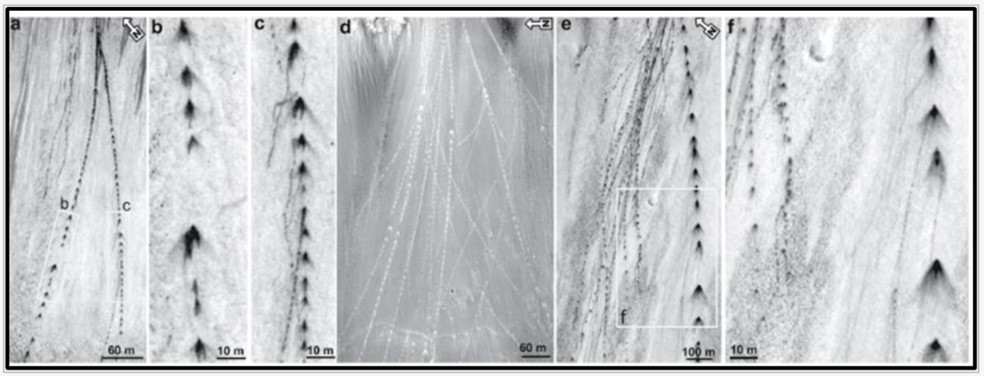
Source:
Hoysala temples
- Context: Hoysala temples in Karnataka have been finalised as India's nomination for World Heritage list for 2022-23.
- Hoysala architecture developed under the Hoysala Empire between the 11th and 14th centuries, concentrated majorly in southern Karnataka.
- It includes the famous temples of
- Hoysaleshvara temple (Lord of the Hoysalas) at Halebid built in dark schist stone by the Hoysala king in 1150,
- Chennakeshava temple in Somnathpura, built around 1268 AD by Narasimha III and
- Kesava temple at Belur in Hassan district built by Vishnuvardhana.
- Hoysala temples are sometimes called hybrid or vesara as their unique style seems neither completely dravida nor nagara, but somewhere in between.
- They are easily distinguishable from other medieval temples by their highly original star -like ground-plans and a profusion of decorative carvings.
- The ‘Sacred Ensembles of the Hoysala’have been on UNESCO’s Tentative list since 2014.

Source:
The Start-up Capital
- Context: As per the Economic Survey 2021-22, Delhi has replaced Bengaluru as the start-up capital of India.
- Over 5,000 recognised start-ups were added in Delhi and 4,514 start-ups were added in Bengaluru between April 2019 to December 2021.
- Maharashtra has the highest number of recognised startups.
- India had 44 start-ups that reached unicorn status in 2021 overtaking the UK to emerge as the third highest country in number of unicorns after the US and China.
- Most of India’s startups are in the IT. However, number of start-ups in the space sector has increased from 11 in 2019 to 47 in 2021.
- One of the important factors responsible for start-ups in Space sector was providing a predictable, forward-looking, well defined and enabling regulatory regime for space activities in the country.
- The first to be updated were the SpaceCom and SpaceRS policies, further liberalising the traditional satellite communication and remote sensing sectors, respectively, and enabling entrepreneurs to take up end-to-end activities in these domains.

Source:
Parasitic Flowering plant
- Context: A new genus of a parasitic flowering plant has recently been discovered from the Nicobar group of islands.
- The parasitic flowering plant belongs to the genus Septemeranthus and it grown on another plant species Horsfieldia glabra (Blume) Warb.
- The name Septemeranthusis is derived from the Latin word ‘septem’ meaning ‘seven’, referring to the arrangement of flowers.
- The genus belongs to the family Loranthaceae, a hemi-parasite. Plants which are hemi-parasites are partially dependent on their host plants for nutrition.
- The parasitic plants in general have a modified root structure spread on the stem of the tree and are anchored inside the bark of the host tree.
- The leaves of the plant are heart-shaped with a very long tip and the ovary, fruit and seeds are earthen pot-shaped.
- They are worldwide in distribution both across tropical and temperate habitats.
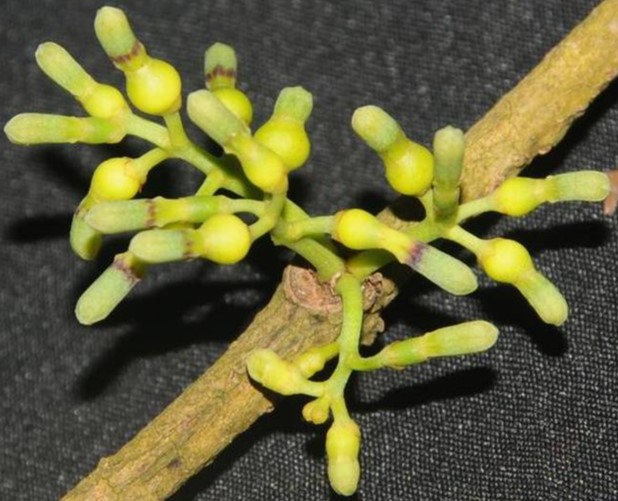
Source:
Khasi language
- Context: The Khasi Authors’ Society (KAS) has undertaken the task of compiling a Khasi-to-Khasi dictionary.
- The objective of the dictionary is to codify and standardize the Khasi language in the written form and to collect and list out as many Khasi words as possible.
- The dictionary will have phonetic transcription of each of the lexical entries that will help both Khasis and non-Khasis to pronounce Khasi words correctly.
- Khasi is a language spoken by around 900,000 people living in the region surrounding the Khasi and Jaintia Hills of Meghalaya and also a sizeable population of Assam and Bangladesh.
- It contains a number of words borrowed from Indo-Aryan languages, especially from Bengali and Hindi.
- Khasi is a member of the Khasic group of Austroasiatic languages.
- Khasi has been a officially recognised as a statutory provincial language in Meghalaya State since 1950, and was recognised as an associate offical language of Meghalaya in 2005.
- There are a number of dialects of Khasi, including Sohra, Khynriam and War, Bhoi and Nonglung.
- Khasi was first written with the Bengali alphabet by William Carey, a British missionary, in the early 19th century. Many Khasi books were written in the Assamese script, and Khasi was first written with the Latin alphabet by Thomas Jones, a Welsh missionary, in 1841. The Latin alphabet is used in Meghalaya, and other parts of India, and the Bengali-Assamese alphabet is used in Bangladesh.

Source:
Nuclear Energy in India: ORF
Essence: The editorial looks at India’s performance at the nuclear energy front and its future prospects with small modular reactors. India had an initial plan to ramp up nuclear energy production to reach 60 GWe capacity by 2032. But the achievements remain considerably slow at 7000 GWe in 2022. This is far below the Chinese and Korean reactors which have a better presence and performance with nuclear energy. Some issues related to nuclear power generation are high fixed capital cost, technical competence, incubation period, and risks associated with spent fuel. Over and above, renewable energy has gained momentum in the last decade, overtaking other forms of energy generation.
In this regard, small module reactors (SMR) are prospective innovations with capacity less than 300 MWe. However, the idea of small competes with economy of scale and economy of mass production. Moreover, SMRs can’t be treated as a complimenting the renewable energy due to technical issues. Thus, as of now, India could rely on PHWR for nuclear power generation.
Why you should read this article?
- To understand the plans and ground level work at nuclear power generation in India.
- To understand the advantages of renewable energy over nuclear power and know the concept of SMR.
Source:
Will global minimum corporate tax deliver?: HBL
Essence: The article talks about the Global Minimum Corporate tax and the two pillars of it. The first one talks about levying tax at the rate 25% on large multinationals on their excess profit. Second pillar talks about the imposing minimum corporate tax of 15 percent all over the world. The economists around the world are of view that GMCT will reduce the benefit of shifting profits to low tax jurisdictions. Along with that it will create investment bias in companies’ w.r.t low taxed countries. Also, this system creates uncertainty on the efficiency of the system as to where to tax the corporates, in the area where they produce or where they sell.
India is one such country which loses $10 billion to tax abuse through profit shifting and has taken efforts like equalization levy and SEP rules to prevent this. Implementing the GMCT system would mean forgoing of 4000 crores of revenue earned through equalization levy. Success of the system would depend on the fact that no country is left out to become tax haven. Along with levying penalties on the offenders. Tax havens could be made things of past if a global treaty is agreed by democratic participation and discussion.
Why you should read this article?
- To understand the two pillars of global minimum corporate tax (GMCT).
- To understand the imperatives for the efficient success of the system.
- To understand the prospective advantages of the system.
- To understand the effect of implementation of GMCT on India.
Source:
Why India values wetland conservation: HT
Essence: The article highlights the importance of Wetlands and the India’s dedicated efforts towards conservation of wetlands. Wetlands are inarguably world’s most economically valuable ecosystems and regulators of the global climate along with forests but are disappearing three times faster than forests. Peatlands, lakes, mangroves etc. not only support wide array of both flora and fauna especially migratory birds, but also store twice as much as carbon than forests. They play crucial role in combatting climate change, biodiversity conservation and reduce the risk of disasters such as floods, by protecting coastlines, they also have cultural significance.
Despite their huge importance, wetlands are globally under threat for many reasons, including water drainage, pollution, unsustainable use, invasive species, deforestation, and soil erosion. India, however with the largest network of Ramsar Sites (49) in South Asia has taken several praiseworthy initiatives. India has taken multiple steps such as National Action Plan (2017-2031), Wetlands (Conservation and Management) Rules and various provisions under Environmental protection Act 1986 to name a few. In 2020, MOEFCC took up the ‘Wetlands Rejuvenation’ to upscale 500 wetlands encouraging peoples’s participation as wetland mitras and with management planning.
India accords high significance to wetlands conservation and seeks to mainstream its full range of values at all levels of developmental planning and decision-making with initiatives such as national wetlands portal, a knowledge hub on wetlands for use of all wetlands managers and stakeholders.
Why you should read this article?
- A very information loaded editorial about all the major initiatives taken by India towards Wetlands management as well as conservation.
- The article provides the importance of wetlands in supporting biodiversity and combatting climate change.
Source:
Sustainable Housing Solution
Background
- Ill effects of concrete buildings like indiscriminate mining of stones, earth and river sand, result in frequent natural disasters like flooding, landslides etc.
- Having observed this phenomenon, a 75-year-old water management specialist Madhavan Namboodiri from Kerala formulated and applied the concept of a sustainable and eco-friendly
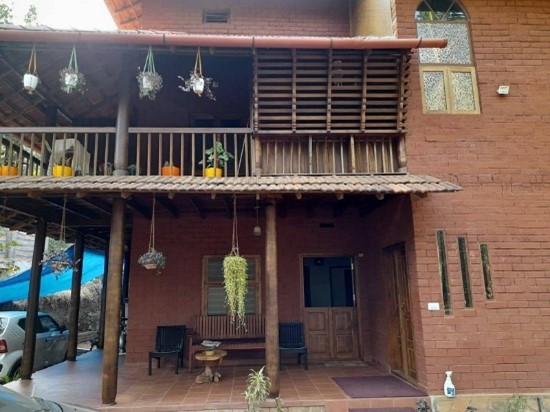
About the work of Madhavan Namboodiri
- With 50 years of experience in the field of water management, this septuagenarian has given shape to a non-profit organisation called Susthira Bhavanam Foundation in 2019 with an objective to introduce and promote alternative sustainable habitat systems.
- He started with creating house walls without concrete cement but using coconut timber in its place. He made use of the unwanted laterite soil and turned it into compressed stabilised interlocking blocks.
- To address the issue of water scarcity, he decided to go for rainwater harvesting. The water from the roof of the house would be filtered and stored. He also incorporated other features such as greywater recycling and passive cooling
- The total cost of the sustainable house was much lesser than a conventional concrete house.
- The house does not need ACs for cooling. Mud wall is breathable which helps the interior remain cool. Also, all materials used are renewable and biodegradable.
Quote:
“We cannot solve our problems with the same thinking we used when we created them.”
– Albert Einstein
Source:
Share the article
Get Latest Updates on Offers, Event dates, and free Mentorship sessions.

Get in touch with our Expert Academic Counsellors 👋
FAQs
UPSC Daily Current Affairs focuses on learning current events on a daily basis. An aspirant needs to study regular and updated information about current events, news, and relevant topics that are important for UPSC aspirants. It covers national and international affairs, government policies, socio-economic issues, science and technology advancements, and more.
UPSC Daily Current Affairs provides aspirants with a concise and comprehensive overview of the latest happenings and developments across various fields. It helps aspirants stay updated with current affairs and provides them with valuable insights and analysis, which are essential for answering questions in the UPSC examinations. It enhances their knowledge, analytical skills, and ability to connect current affairs with the UPSC syllabus.
UPSC Daily Current Affairs covers a wide range of topics, including politics, economics, science and technology, environment, social issues, governance, international relations, and more. It offers news summaries, in-depth analyses, editorials, opinion pieces, and relevant study materials. It also provides practice questions and quizzes to help aspirants test their understanding of current affairs.
Edukemy's UPSC Daily Current Affairs can be accessed through:
- UPSC Daily Current Affairs can be accessed through Current Affairs tab at the top of the Main Page of Edukemy.
- Edukemy Mobile app: The Daily Current Affairs can also be access through Edukemy Mobile App.
- Social media: Follow Edukemy’s official social media accounts or pages that provide UPSC Daily Current Affairs updates, including Facebook, Twitter, or Telegram channels.

